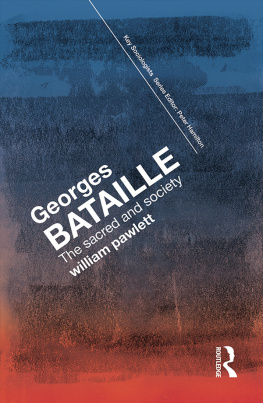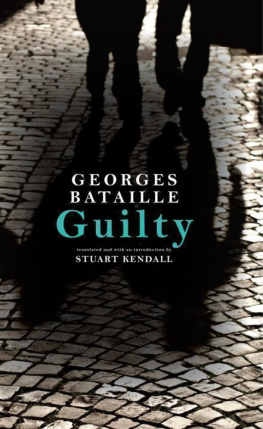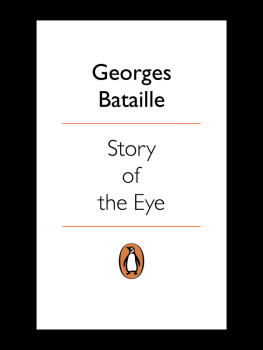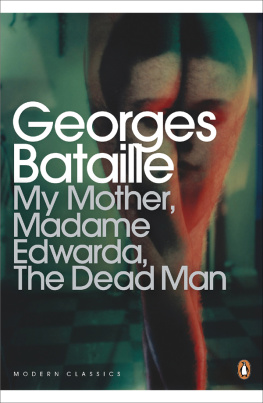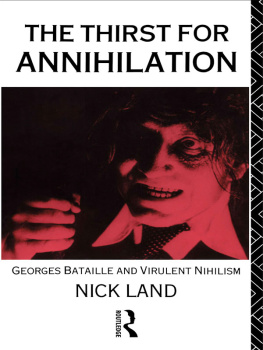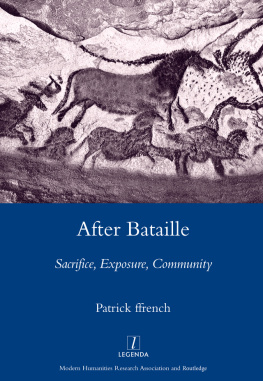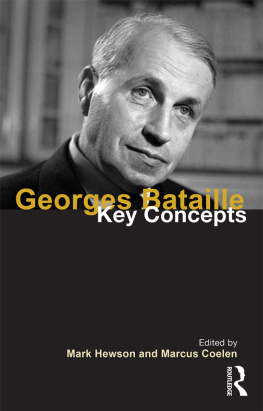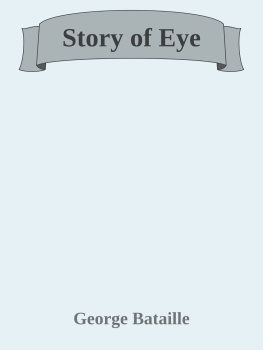I live a few minutes walk from a twelfth-century Abbey, in a town close to the border between England and Wales. The Abbey, though magnifi-cent, has no grounds of its own and is flanked by a supermarket car park and a battered Victorian pub. Just behind the pub there is a sex shop and a massage parlour. At first this conjunction of buildings seemed incongruous to me, perhaps something that might, at least, have disturbed the town councils tourism office. Medieval Abbey, Victorian pub, modern sex shop/massage parlour yet, arent these three institutions intimately connected, different manifestations of an underlying unity? Three paths leading out of the pain of individual existence towards something else, something greater, something other: an experience that silences the ego, stifles the identity, that offers a release and even a form of transcendence. In the psycho-geography of this area, religion, drunkenness and sex stand together, all opposed to the sheer vileness of a supermarket car park that threatens to engulf them all.
By early evening kids are cramming themselves into the pub at the same time as the aged leave the evening service and, perhaps, the furtive slip out of the back door of the massage parlour. But are they not a community of sorts? Sharing the same need, a need not for something but for nothing, for an experience of the senses taken through and beyond material stimulation to a point where the senses become spiritual organs, where physiological materialism explodes into spiritual transcendence, where the living death of working life is annihilated by the life of the spirit facing mortality.
But isnt the Abbey built on a lie? A lie that has lost its ability to deceive and so become a sham, a husk, a museum; a lie that was once propped up by sovereigns and tyrants, inquisitions and witch-hunts, and which now languishes in irrelevance? But then which of these institutions is the most dishonest? A drinking house built on some fantasy of working-class male solidarity selling a narcotic which diminishes both body and mind? Or pornography and sexual services: the domain of the joyless, scripted, hyper-capitalist elimination of sensuality? And if only lies are available, which lie is to be preferred?
Key Sociologists
Edited by Peter Hamilton
This classic series provides students with concise and readable introductions to the work, life and influence of the great sociological thinkers. With individual volumes covering individual thinkers, from Emile Durkheim to Pierre Bourdieu, each author takes a distinct line, assessing the impact of these major figures on the discipline as well as the contemporary relevance of their work. These pocketsized introductions will be ideal for both undergraduates and pre-university students alike, as well as for anyone with an interest in the thinkers who have shaped our time.
Series titles include:
DANIEL BELL
Malcolm Waters
EMILE DURKHEIM
Ken Thompson
THE FRANKFURT SCHOOL AND ITS CRITICS
Tom Bottomore
GEORG SIMMEL
David Frisby
MARX AND MARXISM
Peter Worsley
MAX WEBER
Frank Parkin
MICHEL FOUCAULT
Barry Smart
PIERRE BOURDIEU
Richard Jenkins
SIGMUND FREUD
Robert Bocock
ZYGMUNT BAUMAN
Tony Blackshaw
AUGUSTE COMTE
Mike Gane
ERVING GOFFMAN
Greg Smith
JEAN BAUDRILLARD
William Pawlett
NIKLAS LUHMANN
Christian Borch
BRUNO LATOUR
Anders Blok and Torben Elgaard Jensen
GEORGES BATAILLE: THE SACRED AND SOCIETY
William Pawlett
Content
Id like to express my thanks to a number of people who, directly or indirectly, helped me to complete this book. They are: Mick Dillon, Scott Lash, Mike Gane, David Clarke, Gerry Coulter, Edia Connole and Meena Dhanda.
Agamben, G. (1997). The coming community (Michael Hardt, Trans.). Minneapolis: University of Minnesota Press.
Agamben, G. (1998). Homo sacer sovereign power and bare life (Daniel Heller-Roazen, Trans.). Stanford, CA: Stanford University Press.
Ansell-Pearson, K. (1997). Viroid life. London: Routledge.
Arendt, H. (1958). The human condition . Chicago, IL: University of Chicago Press.
Arppe, T. (2009). Sorcerers apprentices and the will to figuration: the ambiguous heritage of the Collge de Sociologie. Theory, Culture and Society, 26 (4), 117145.
Badiou, A. (2012). The re-birth of history: times of riots and uprisings (Gregory Elliot, Trans.). London: Verso.
Barthes, R. (1982). The metaphor of the eye. In G. Bataille, The story of the eye (pp. 119127; Joachim Neugroschal, Trans.). Harmondsworth: Penguin.
Bataille, G. (1955). Lascaux or the birth of art (Austryn Wainhouse, Trans.). Geneva: Albert Skira.
Bataille, G. (19701988). Oeuvres completes (Vols. 112). Paris: ditions Gallimard.
Bataille, G. (1979). Blue of noon (Harry Mathews, Trans.). New York: Marion Boyars.
Bataille, G. (1982). The story of the eye (Joachim Neugroschal, Trans.). Harmondsworth: Penguin.
Bataille, G. (1985) Visions of excess: selected writings 19271939 (A. Stoekl, Ed. & Trans.). Minneapolis: University of Minnesota Press.
Bataille, G. (1986). Erotism (Mary Dalwood, trans.). San Francisco, CA: City Lights.
Bataille, G. (1987). Lettres Roger Caillois (J-P Le Bouler, Ed.). Romill: Editions Folle Avoine.
Bataille, G. (1988a). The accursed share (Vol. 1; Robert Hurley, Trans.). New York: Zone Books.
Bataille, G. (1988b). Inner experience (Leslie Anne Boldt, Trans.). Albany: State University of New York.
Bataille, G. (1989a). Theory of religion (Robert Hurley, Trans.). New York: Zone Books.
Bataille, G. (1989b). My Mother, Madame Edwarda, The Dead Man (Austryn Wainhouse, Trans.). New York: Marion Boyars.

